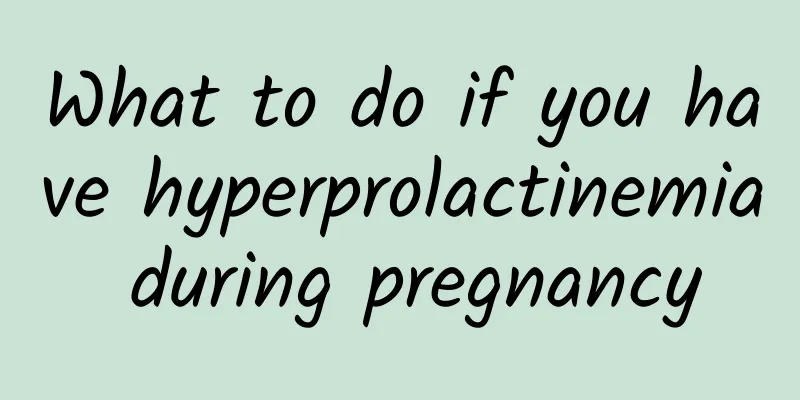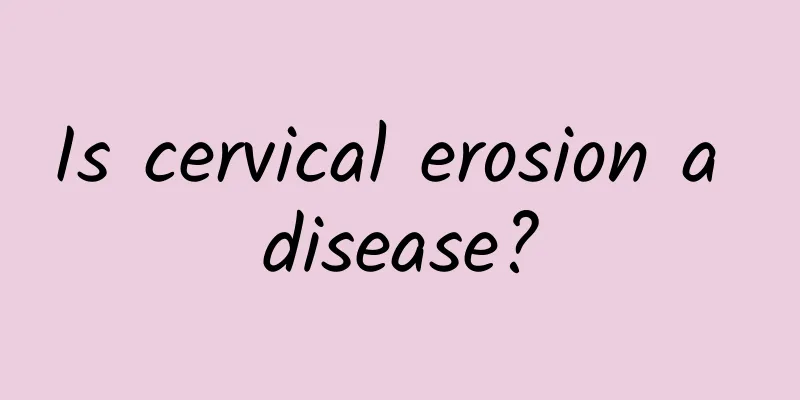What to do if you have hyperprolactinemia during pregnancy

|
When women are under too much work pressure, have an unhealthy diet, and live in a polluted environment, they are very prone to illness. For women, the causes of hyperprolactinemia are different in many cases, but after childbirth, there are three types of women who are more likely to suffer from hyperprolactinemia. Please see the detailed introduction below. The longer a woman breastfeeds after giving birth, the lower the risk of hyperprolactinemia in the future. If she can breastfeed for more than 6 months, at least 1,000 people can be protected from hyperprolactinemia every year. Breastfeeding can prompt the female endocrine system to adjust and gradually restore sex hormones to a balanced state. The more times and longer the breastfeeding, the lower the risk of hyperprolactinemia. The incidence of hyperprolactinemia in women who do not breastfeed is about 5 times higher than that in women who breastfeed. In addition, breastfeeding is a process that consumes a lot of heat energy, which is beneficial for mothers to lose weight. People who do not understand breast care knowledge and have not received formal training cannot master the strength of the technique and often use brute force to violently squeeze the breasts. Violent squeezing not only fails to open the milk stasis tubes, but also makes the milk stasis worse, thus causing inflammation and then leading to hyperprolactinemia. In addition, for parturients with cracked nipples, if the massager is unhygienic, it will greatly increase the chance of infection. Bacteria can enter the tissue from the cracked nipples, thus causing inflammation. Breast reduction by compression method: Some women feel that their breasts are excessively enlarged after giving birth, which they think is unsightly, so they use bras to compress them. This "compression method" often backfires. Once the "compression" is released, the breasts immediately sag and droop. Artificial filling: The artificial method of using filling materials to enlarge the breasts has serious impacts on health. Fillers such as silicone can easily induce hyperprolactinemia if they stay in the body for a long time. If women do not pay attention to their living habits after childbirth, it will be very harmful to their bodies. Therefore, after the onset of hyperprolactinemia, they need to go to a regular hospital for treatment. Warm reminder: In daily life, women must pay more attention to the way of milking and breast care after childbirth. |
<<: Can you get pregnant with hyperprolactinemia?
>>: Is hyperprolactinemia caused by pregnancy?
Recommend
We should pay attention to the harmful manifestations caused by adnexitis
Adnexitis is common in life. After suffering from...
Can vaginal candidiasis cause anal pain?
Candidiasis usually refers to vulvovaginal candid...
More haste, less speed! Do these 4 steps to lose weight and never gain weight again
Losing weight is a subject that many girls strive...
How to treat uterine fibroids
We are all worried about the emergence of some tr...
What to do with ectopic pregnancy? 3 ways to treat it
Under normal circumstances, the fertilized egg im...
Typical symptoms of pelvic inflammatory disease
Pelvic inflammatory disease is a disease that occ...
Multi-pronged approach to provide good care for pelvic inflammatory disease
Pelvic inflammatory disease usually occurs acutel...
Is chocolate cyst prone to recurrence after surgery?
Is chocolate cyst prone to recurrence after surge...
Is it normal to have your period 7 days early?
Irregular menstruation is a common disease that e...
How to check for bacterial vaginosis
Many women usually ignore the health of their pri...
[PK Online Rumor] Can catechins burn fat? Zhao Hanying said so...
It is widely rumored on the Internet that "d...
How long does it take to get menstruation after hysteroscopic surgery for uterine fibroids
After hysteroscopic surgery for uterine fibroids,...
What are the symptoms of ovarian cysts?
Ovarian cysts usually have no obvious symptoms in...
Does cervicitis increase the risk of infertility in women? Five things you must do to prevent cervicitis
Due to the particularity of the female body, and ...
Are the signs of uterine fibroids the same? What should be paid attention to when treating uterine fibroids?
Uterine fibroids with blood stasis have dark purp...









